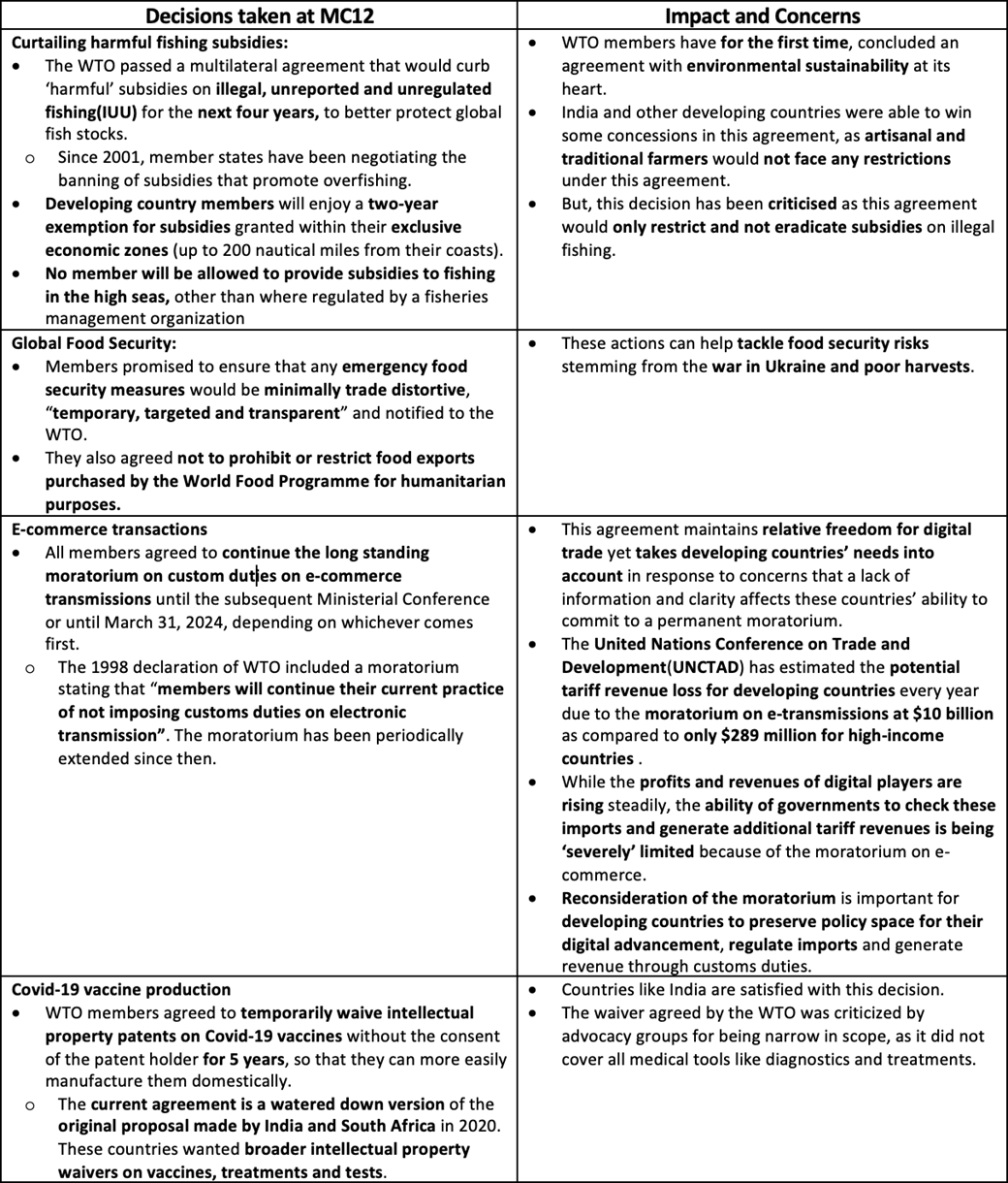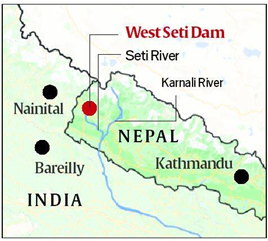Monday, 27th June 2022
Assam Floods - Edukemy Current Affairs
In News
Assam is witnessing another spate of its annual flooding with the Brahmaputra breaching its embankments due to incessant rainfall.
About the News
- So far, Assam has recorded an excess rainfall of 109 per cent in June.
- More than 5,000 villages have been inundated, with the Brahmaputra presently flowing above the danger level at Dhubri, Goalpara, Guwahati, Tezpur,and Neamatighat.
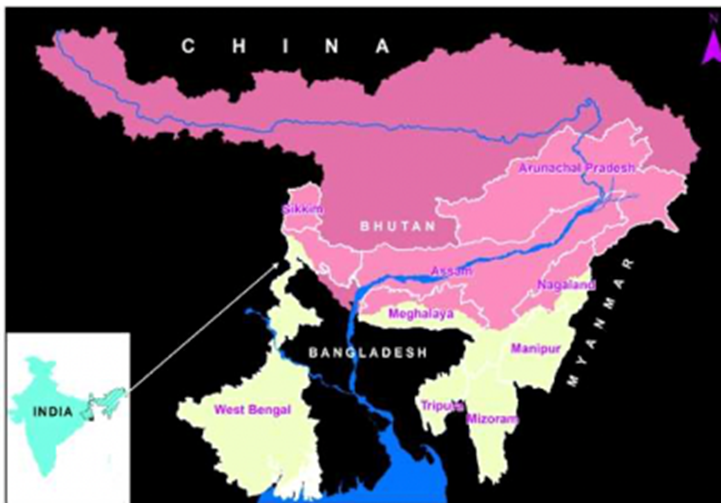
- Besides the Brahmaputra, rivers Beki, Manas, Pagladiya, Puthimari, Kopili, Subansiri are flowing above the danger level and Kopili is above the ‘highest flood level’.
- Assam’s unique topography, climate and socio-economic conditions make it more vulnerable to disasters like floods, with over one-third of the population living below the poverty line.
Reasons for floods in Assam
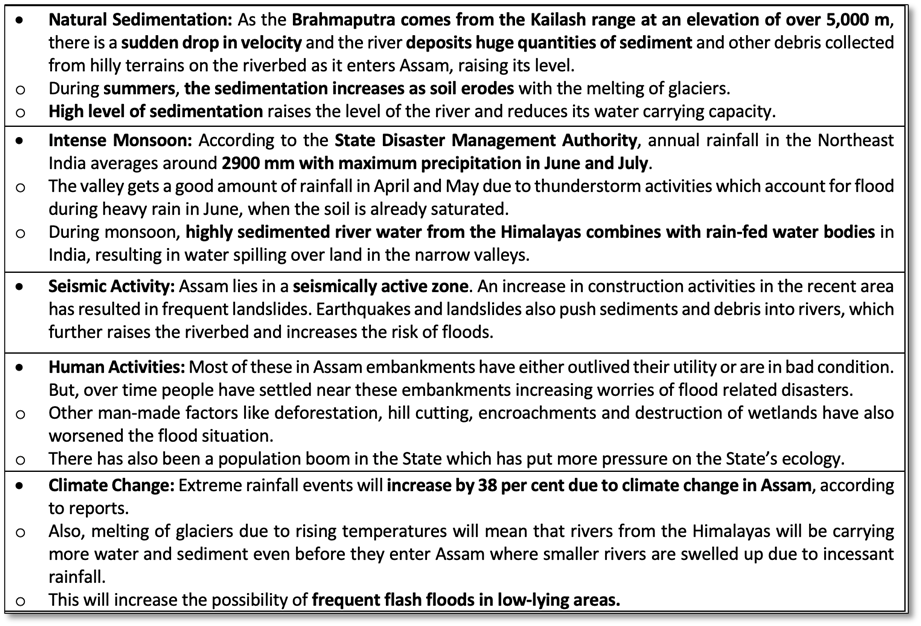
Flood Mitigation Strategies by the State:
 Way Forward
Way Forward
- One of the major steps that Assam could undertake could be to strengthen embankments along the Brahmaputra and other rivers.
- Increasing the water-holding capacity of the Brahmaputra and its tributaries by dredging may help.
- Modern weather stations in the upstream catchment of all dams in the North East and installing of sirens on river banks near dams has also been suggested.
- The panel also suggested afforestation and rejuvenation of wetlands.
- The government should consider the inclusion of river erosion in the admissible list of calamities for availing assistance under the National Disaster Response Fund / State Disaster Response Fund.
- Brahmaputra Board, which has been functional since 1982 needs to increase manpower.
- The report suggested that the Union Ministry of Jal Shakti should consider providing financial assistance to those states that were willing to implement floodplain zoning.
- Setting up of River Basin Organizations or RBOs. These would effectively provide immediate, short-term and long-term solutions in addition to the overall development of river basin.
Sources:
Pradhan Mantri Awas Yojana (PMAY)- Urban
In News
The Pradhan Mantri Awas Yojana (PMAY)- Urban has recently completed seven years of successful implementation.
About the News
- With a total investment of Rs 8.31 Lakh Crore, PMAY-U hasso far sanctioned 122.69 lakh houses, out of which more than 1 crore houses have been grounded and over 61 lakh houses have been completed and delivered to the beneficiaries.
All about Pradhan Mantri Awas Yojana Urban (PMAY-U)
- What is it? Pradhan Mantri Awas Yojana – Urban (PMAY-U), is a flagship Mission of Government of India launched in 2015, by the Ministry of Housing and Urban Affairs (MoHUA).
- Objective: The Mission addresses urban housing shortage among the Economically Weaker Sections (EWS)/Low Income Groups (LIG) and Middle Income Group (MIG) categories including the slum dwellers by ensuring a pucca house to all eligible urban households by the year 2022- Housing for All by 2022.
- Financial Aid: The government provides a subsidy on availing loans for the purchase, construction, extension, or improvement of a house and makeshome loans affordable for the urban poor.
- Convergence with other schemes: The scheme is converged with other government schemes to ensure that houses have a toilet, and access to electricity and drinking water and was launched with a target of completing 2.7 crore houses by 2022.
-
- So far, a reported 1.8 crore houses have been constructed, i.e., nearly 67% of the target.
-
- Four major components of the scheme:
- Credit subsidy: Under the Credit Linked Subsidy Scheme of PMAY, the government provides an interest subsidy of 6.5%, 4% and 3% for EWS/LIG, MIG-I and MIG-II category respectively on housing loans for a period of 20 years.
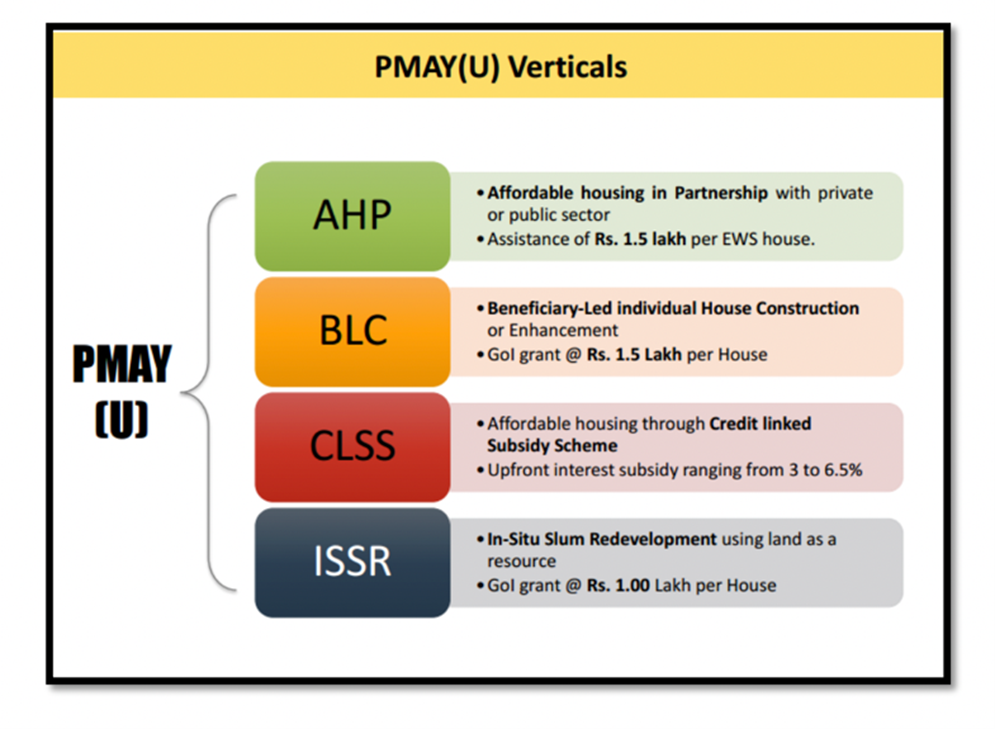
-
- Slum redevelopment: This part of the scheme aims to redevelop slums using land as a resource in partnership with private organisations.
- The Centre determines the prices of the houses and the beneficiary contribution (if any) is decided by the respective state government or union territory.
- Affordable Housing in Partnership: The government provides financial assistance of Rs. 1.5 lakh to EWS families for the purchase of houses where the States and UTs can partner with the private sector to develop such projects.
- Preference in allotment may be given to people with physical disabilities, senior citizens, SCs and STs, and other vulnerable sections of society.
- Subsidiary for Beneficiary-led Construction or Enhancement: This component aims to financially assist EWS families in the construction of a new house or the enhancement of an existing one.
- Slum redevelopment: This part of the scheme aims to redevelop slums using land as a resource in partnership with private organisations.
- Eligibility under the scheme:
- The beneficiary should not be aged over 70 years at the end of the repayment period.
- The annual family income limit is Rs 3 lakh per annum for the EWS category, Rs 3-6 lakh for LIG category, Rs 6-12 lakh for MIG-I, and Rs 12-18 lakh for the MIG-II group.
- The applicant should not own a house in any part of India.
- The applicant should not have availed a housing scheme offered by the central or state governments.
Source:
- 7th Anniversary to commemorate launch of Pradhan Mantri Awas Yojana-Urban celebrated by MoHUA
- Explained: What is Pradhan Mantri Awas Yojana and how to avail subsidy?
Image source:
14th BRICS Summit - Edukemy Current Affairs
In News
The 14th BRICS summit hosted by China, was recently held in a virtual mode.
About the News
- The summit was virtually held under Chairmanship of China under the theme "Foster High-quality BRICS Partnership, Usher in a New Era for Global Development.”
- In the summit, the BRICS countries had adopted the ‘Beijing Declaration’ and also called for a push to expedite implementation of 2030 Agenda for Sustainable Development.
Key highlights of the 14th Summit- Beijing Declaration:
This involves,
- Strengthening and Reforming Global Governance based on multilateralism and adherence to international laws.
- It includes more inclusive global governance instruments, respecting sovereignty and territorial integrity of all countries.
- It calls for reforms of principal organs of UN and urged developed countries to exercise “responsible economic policies while managing policy spill overs”.
- Promote post COVID Economic Recovery and Sustainable Development and intensify BRICS Partnership on New Industrial Revolution (PartNIR).
- PartNIR, along with NDB, aims to promote the sustainable development agenda, including the delivery of SDGs, in BRICS as well as other emerging markets and developing countries.
- Safeguarding Peace and Security through peaceful resolution of disputes and a world free of nuclear weapons.
- BRICS group support dialogue between Russia, Ukraine: The BRICS nations have supported diplomacy and dialogue between Russia and Ukraine. China, India and South Africa have abstained from voting on a UN resolution condemning Russia's invasion of Ukraine.
- Rejection of 'Cold war mentality': China has called for world peace by rejecting "Cold War mentality and power politics" demanding countries to support each other and operationalise Global Security Initiative proposed by China.
- Comprehensive Convention on International Terrorism: Treaty proposed to combat all terror finance networks: The declaration reiterated that terrorism should not be associated with any religion, nationality, civilisation or ethnic group and called for an expeditious finalisation and adoption of the Comprehensive Convention on International Terrorism within the UN framework.
- BRICS initiative on Denial of Safe Haven to Corruption:
The summit welcomed the BRICS Initiative on Denial of Safe Haven to Corruption, which aims to further strengthen anti-corruption capacity building through education and training programs and enhance anti-corruption exchanges and cooperation within multilateral frameworks.
- More focus on combating transnational drug trafficking: The BRICS Anti-Drug Working Group plays an active role in combating transnational drug trafficking and promoting global drug governance and aims at further strengthening drug control cooperation.
- Framework for consumer protection in e-commerce: The BRICS nations have agreed to promote consumer protection in e-commerce by advancing the implementation of BRICS Framework for Consumer Protection in E-commerce.
- Establishment of BRICS Think Tank Network for Finance: BRICS nations have decided to establish the BRICS Think Tank Network for Finance that will work independently and provide intellectual support, for knowledge sharing, exchange of experiences and practices and cooperation on finance issues amongst BRICS countries.

Source:
- Brick by brick: On the 14th BRICS Summit
- 14th BRICS summit to review current global issues, reach key agreements
Image source:
Yen made official monetary unit of Japan
On June 27, 1871, the yen was adopted as Japan's official monetary unit. It was first minted in 1869. Along with the adoption of yen, the government suspended the exchange of clan notes, money issued by feudal lords that had circulated since the 16th century. Currently, 1 Japanese Yen equals 0.58 Indian Rupee. Japanese yen is one of the currencies in IMF’s SDR.
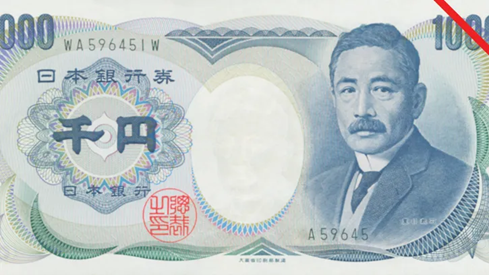
The SDR (Special Drawing Right) is an artificial "basket" currency used by the IMF (International Monetary Fund) for internal accounting purposes. The SDR is also used by some countries as a peg for their own currency, and is used as an international reserve asset.
Sources:
Urban Cooperative Banks (UCBs)
- Context: The Minister for Home and Cooperation has recently asked the Urban Cooperative Banks (UCBs) to undertake institutional reforms.
- A Cooperative Bank is an institution established on a cooperative basis to deal with the ordinary banking business.
- Like other banks, cooperative banks are founded by collecting funds through shares, accepting deposits, and granting loans.
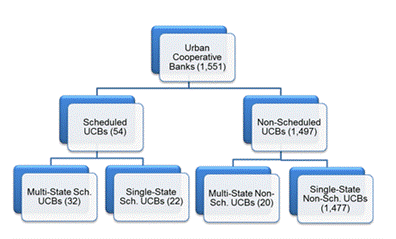
- They are Cooperative credit societies where members from a community group together to extend loans to each other, at favourable terms.
- They are registered under the Cooperative Societies Act of the State concerned or the Multi-State Cooperative Societies Act, 2002 and are governed by the Banking Regulations Act, 1949 and Banking Laws (Cooperative Societies) Act, 1955.
- They are broadly divided into urban and rural cooperative banks.
- The term UCBs is not formally defined but refers to primary cooperative banks located in urban and semi-urban areas.
- Till 1996, these banks were allowed to lend money only for non-agricultural purposes. However, their scope of operations has widened considerably.
Source:
- Urban Cooperative Banks won’t be treated as second-grade citizen: Amit Shah
- New RBI guidelines on urban cooperative banks explained
Image source:
Participatory notes (P-notes) - Edukemy Current Affairs
- Context: Investment in the Indian capital markets through Participatory notes (P-notes)has dropped to Rs 86,706 crore till May-end, 2022.
- Participatory Notes also known as P-Notes (PNs) are financial instruments required by investors or hedge funds to invest in the stock markets in India, without being registered under SEBI.
- Foreign Institutional Investors (FIIs) issue the financial instruments to investors in other countries who want to invest in Indian securities.
- An FII is an investor or investment fund registered in a country outside of the one in which it is investing.
- These investments are beneficial to India as they provide access to quick money to the Indian capital market.
- Because of the short-term nature of investing, regulators have fewer guidelines for foreign institutional investors.
- To invest in the Indian stock markets and to avoid the cumbersome regulatory approval process, these investors trade participatory notes.
- Though P-note holders have less stringent registration requirements, they have to go through a proper due diligence processof the SEBI.
Source:
Image source:
Snake Island - Edukemy Current Affairs
- Context: Ukraine has recently caused significant losses to the Russian military in airstrikes on Zmiinyi Island, also known as Snake Island, in the Black Sea.
- The hit on the island is believed to be the second major military success using missiles given to Ukraine by the West.
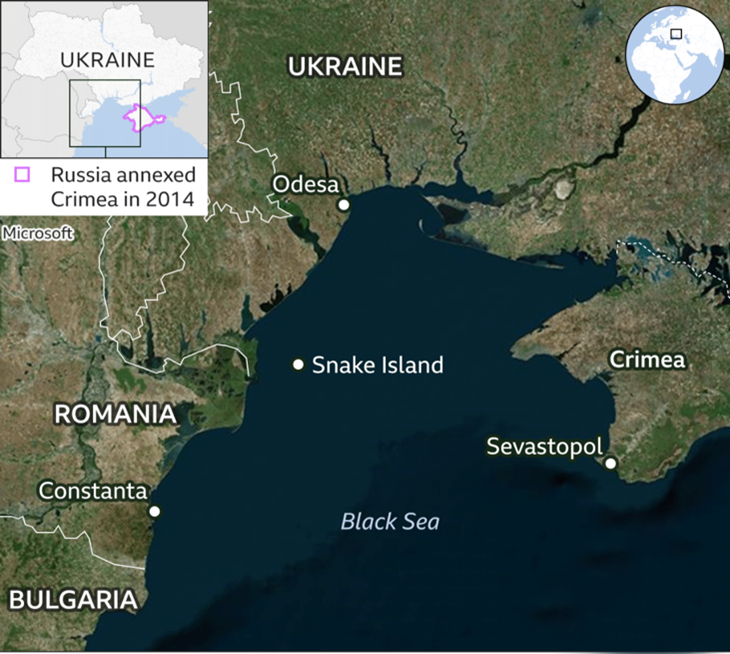
- Zmiinyi Island, also known as Snake or Serpent Island,is a small piece of rock less than 700 metres from end to end, that has been described as being X-shaped.
- It is located 35 km from the coast in the Black Sea, to the east of the mouth of the Danubeand roughly southwest of the port city of Odessa.
- The Danube is the second longest river in Europe after the Volga. It rises in the Black Forest mountains of western Germany and flows for some 2,850 km to its mouth on the Black Sea.
- It has been known since ancient times and is marked on the map by the tiny village of Bile that is located on it, belonging to Ukraine.
Source:
- Explained: The importance of Snake Island, speck of land in the Black Sea, where Ukraine has bombed Russia
- Snake Island
Image source:
World’s Largest Bacterium - Edukemy Current Affairs
- Context: Scientists have recently discovered the world's largest bacterium in a Caribbean mangrove swamp.
- The largest bacterium- Thiomargarita magnifica, is about 1cm long and is roughly 50 times larger than all other known giant bacteria and the first to be visible with the naked eye.
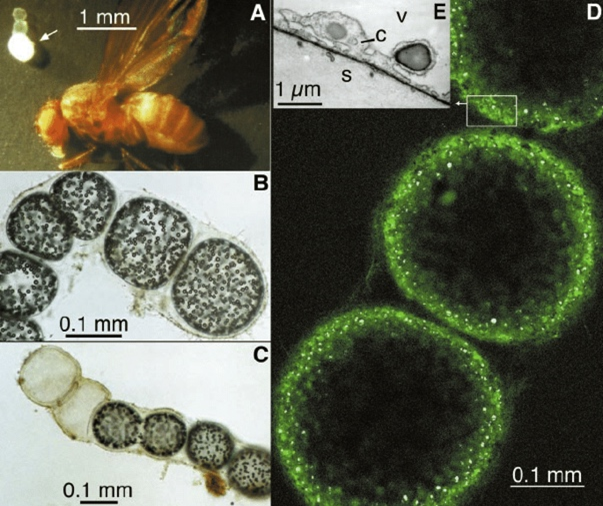
- It comes in the form of white filaments the size of human eyelashes, on the surfaces of decaying mangrove leaves in shallow tropical marine marshes.
- The bacterium exhibited a strange internal structure. In most bacteria, the DNA floats around freely inside the cell, whereas, Thiomargarita magnifica appears to keep its DNA more organised inside membrane-bound compartments throughout the cell.
- The bacterium was also found to contain three times as many genes as most bacteria and hundreds of thousands of genome copies spread throughout each cell, making it unusually complex.
- One possibility of its big size is that it adapted to evade predation.
- The bacteria have not yet been found in other locations.
Source:
Weakening Rupee's Impact on Economy: Livemint
Essence: Dollar has strengthened against most currencies and rupee is no exception. If prevailing domestic and global factors are any clue, weakening of rupee with continue. This combined with globally high inflation mainly because of war fueled supply side disruptions and consequent widening of trade deficit has created a situation where pressure on rupee is only expected to increase. Weakening of the rupee will increase imported inflation. Its positive effect in terms of increased export is expected to be subdued because of weak global demand and high import component of India’s exports. It will also have less than salutary impact on external debt of government and external commercial borrowings.
How far and how fast the rupee can slide is a moot question, but the high level of Forex reserve has given power to RBI to moderate the rate of slide.
Why should you read this article?
- To understand why the exchange rate fluctuates.
- To understand the impact of exchange rate fluctuation on different economic parameters like import-export and inflation.
Source:
Maharashtra Crisis Exposes Anti-Defection Law: IE
Essence: The anti-defection statute is once again in the spotlight due to the political situation in Maharashtra. Furthermore, the exercise of power by proxy in politics has a long history. The law and its proposed modifications frame the problem of defections via the lens of denying power to the defector, but this framing consistently falls short in the face of a greater and/or more severe power. Article further suggests the measures to address the issue and raises few fundamental questions on how law has undermined our democracy.
Why should you read this article?
- Understanding the history of anti-defection legislation and how it has been misused in the past.
- To comprehend the ways in which the rule of law repeatedly fails in the face of greater authority, eroding our democracy.
Source:
Bio-Bricks building - Edukemy Current Affairs
- The Indian Institute of Technology (IIT) in Hyderabad recently inaugurated India’s first building made of bio-bricks from agro-waste.
- It is a perfect illustration of ‘Wealth from Waste’.
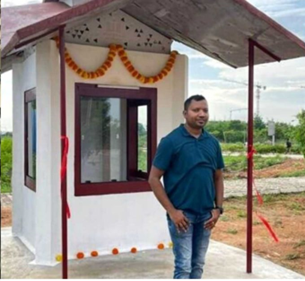
About the Bio-Brick
- Under this initiative agricultural waste is converted into sustainable materials which, in turn, can be used to build eco-friendly, cost-effective structures.
- According to the researchers, the material exhibits excellent thermal insulation and fire-retardant properties.
- When used in roofing and wall panelling, it can effectively reduce heat gain by 5 – 6 degrees. Regular bricks lead to the loss of fertile topsoil and more air pollution.
- Bio-bricks are economical and are found to be 1/8 and 1/10 of weight for similar volume compared to burnt clay bricks and concrete blocks, respectively. Compared to burnt clay bricks, Bio-bricks will cost about Rs 2-3 when mass-produced.
- Farmers can make this material at the site and further reduce labour costs. Manufacturing bio-bricks can add to the marginal farmers’ income and create a new employment opportunity during off-seasons.
Source:
Share the article
Get Latest Updates on Offers, Event dates, and free Mentorship sessions.

Get in touch with our Expert Academic Counsellors 👋
FAQs
UPSC Daily Current Affairs focuses on learning current events on a daily basis. An aspirant needs to study regular and updated information about current events, news, and relevant topics that are important for UPSC aspirants. It covers national and international affairs, government policies, socio-economic issues, science and technology advancements, and more.
UPSC Daily Current Affairs provides aspirants with a concise and comprehensive overview of the latest happenings and developments across various fields. It helps aspirants stay updated with current affairs and provides them with valuable insights and analysis, which are essential for answering questions in the UPSC examinations. It enhances their knowledge, analytical skills, and ability to connect current affairs with the UPSC syllabus.
UPSC Daily Current Affairs covers a wide range of topics, including politics, economics, science and technology, environment, social issues, governance, international relations, and more. It offers news summaries, in-depth analyses, editorials, opinion pieces, and relevant study materials. It also provides practice questions and quizzes to help aspirants test their understanding of current affairs.
Edukemy's UPSC Daily Current Affairs can be accessed through:
- UPSC Daily Current Affairs can be accessed through Current Affairs tab at the top of the Main Page of Edukemy.
- Edukemy Mobile app: The Daily Current Affairs can also be access through Edukemy Mobile App.
- Social media: Follow Edukemy’s official social media accounts or pages that provide UPSC Daily Current Affairs updates, including Facebook, Twitter, or Telegram channels.



